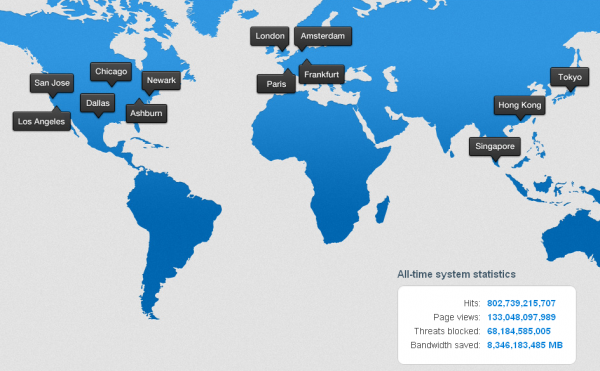3 Essential Features For Multinational Content Delivery
Most multinational sites will serve content via a Content Delivery Network (CDN). But not all CDNs are equal: what should you look for to get the best bang for your buck in Search Engine Result Pages (SERPs) across the globe? Since Google’s Caffeine update to its server infrastructure back in June 2010, Google has stepped […]
Most multinational sites will serve content via a Content Delivery Network (CDN). But not all CDNs are equal: what should you look for to get the best bang for your buck in Search Engine Result Pages (SERPs) across the globe?
Since Google’s Caffeine update to its server infrastructure back in June 2010, Google has stepped up the importance of page load speed to its core algorithm. But page load speed has always been important to Google in providing a good searcher experience for Google searches.
And this is a logical stance if you take a second to think it through.
After all, if you consistently found that despite throwing up relevant results your searches continually returned sites which took ages to load, you’d seriously consider using a different search engine too, right?
So what causes slow page load times?
Well, the top five most common causes (in no particular order) which are cited in most large-scale studies of page response times, and which are tackled by all of the tools out on the market today are:
- Poor Caching Controls
- High Request Overheads
- Large Payload Sizes
- Long Round-Trip Times
- No Device Optimisation
The details around each type of issue are well documented elsewhere, for example in Google’s Web Performance Best Practice or Yahoo! Developer’s performance notes, so I won’t run over them again here.
All we need to know is that the number one – and most common – impact to page load times is poor caching controls. However, for multinational sites the very specific caching issue we should look to solve is ‘Proxy Caching’.
Proxy Caching is the practice of storing static resources on public web proxy servers. This is the type of advantage we can leverage in multilingual campaigns targeting multiple territories using a well distributed CDN.
So what should we be looking at to evaluate the quality of a CDN?
1. Well Distributed Edge Nodes
The most important criteria. The location of the CDN’s Edge Nodes should be close to the searcher’s location, this means that having all their servers in just Europe or the US would disadvantage searchers from Asia, for example.
Track down the CDN’s network map and match it against the locations you’re targeting in your search marketing startegy: are all the key countries covered?
If not, you’ll likely still see multiple hops are required for page requests and much of the speed optimisation is lost.
Try testing a CDN’s claims by performing a Ping & Traceroute from an IP within one of your target markets. Use a free multi-territory ping service such as that offered by dotcom-monitor.
2. Configurable Static Caching Of Dynamic Content
You may have noticed that Proxy Caching is concerned with static content.
If your site is built dynamically (and if it’s targeting multiple countries and languages, then it almost certainly is), then regardless of how well your static assets are cached, if big chunks of your body HTML requires dynamic loading then speed gains are for naught.
So make sure your CDN allows you to configure only those essential dynamic areas that should be served directly from your own servers, and dump all the rest of the content to their caching controls.
In 99% of cases, ‘essential’ dynamic areas are often not all that essential, so take time to determine precisely what functionality you need to retain control of on your own servers, and allocate your own resources to focus on its delivery.
For example, updates on your homepage about latest news do not count as ‘essential’ dynamic content.
Depending on your flavour of code, you will likely find a function that allows you to specify CDN information for static files or cache content generated dynamically such as Django’s STATICFILES_STORAGE, which also gives you an easy way to switch providers should you discover the CDN isn’t delivering on its response time promises.
3. Implementation Convenience & Performance Analytics
Many of the more recent CDNs offer superb ease of use when configuring, and speaking as a battle hardened agency-side technical support, that goes a long way in making it into favour with your client’s technical team’s shortlist.
For all the technical sophistication possible with CDNs, the ability to largely hand over the configuration to a few simple WYSIWYG steps in a provider interface has a lot going for it in terms of implementation overhead.
It also prevents errors creeping in to the delivery path, most of which can be critical issues for an SEO’s strategy: a huge benefit.
With such providers, implementation is usually just a case of altering the relevant DNS records to point to their network, which is a 5 minute job.
Making sure the CDN implementation is performing therefore becomes the main criteria for judging if your provider is delivering for you. Look for transparent reporting on traffic location, any user-agent or ‘known threat’ filtering, IP blocking, caching performance, and page load time overview by location.
Ideally, look for integration with your existing Analytics package as this allows you to combine into your standard reporting speed and performance metrics which are business critical to an SEO’s job these days.
Opinions expressed in this article are those of the guest author and not necessarily Search Engine Land. Staff authors are listed here.
Related stories
